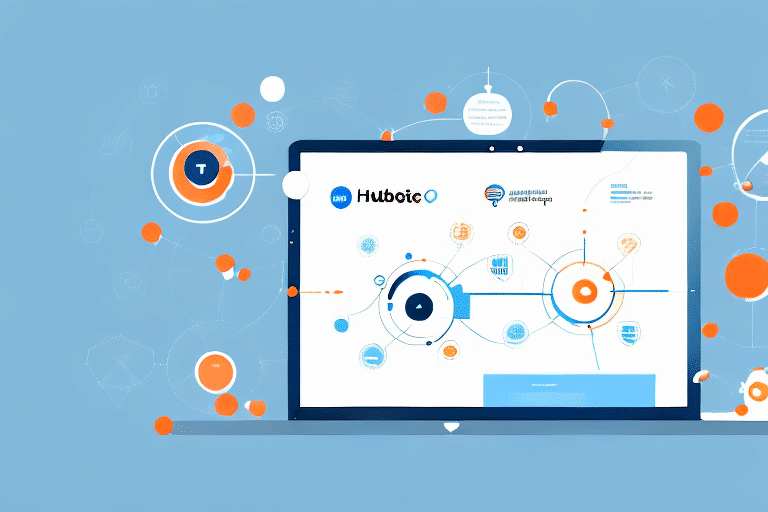Introduction to Local Storage Optimization (LSO) for HubSpot Users
In the dynamic landscape of digital marketing, Local Storage Optimization (LSO) has emerged as a pivotal tool for HubSpot users aiming to enhance their online strategies. LSO enables websites to store data locally on a user's device, facilitating personalized user experiences, improved website performance, and more effective marketing campaigns.
By leveraging LSO, businesses can retain user preferences, login details, and browsing history, which in turn allows for targeted marketing efforts, personalized landing pages, and stronger relationships with leads and customers. According to a Forbes article, personalized marketing campaigns can increase conversion rates by up to 50%, underscoring the importance of tools like LSO.
Setting Up LSO in Your HubSpot Account
Step-by-Step Guide to Connecting LSO
- Access HubSpot Settings: Log in to your HubSpot account and navigate to the settings panel.
- Enable LSO: Click on the "Tracking" tab, select "Cookie Settings," and enable Local Storage Optimization.
- Implement JavaScript Code: Add the provided JavaScript code snippet to your website’s header to activate LSO functionalities.
- Verify Implementation: Use browser developer tools to ensure that LSO is correctly storing data on user devices.
Ensuring a seamless setup process can significantly impact the effectiveness of your LSO strategy. HubSpot’s official guide provides additional insights and troubleshooting tips.
Optimizing LSO for Enhanced Performance
Personalizing User Experiences
Utilize LSO to store critical user data such as form submissions and abandoned cart items. This information can be leveraged to create highly targeted email campaigns and personalized content, increasing user engagement and conversion rates.
Cross-Device Tracking
LSO facilitates tracking user behavior across various devices, allowing for a unified view of user interactions. This capability is essential for businesses with a significant mobile presence, ensuring consistent experiences across desktop and mobile platforms.
According to a Statista report, mobile traffic accounts for over 60% of global internet usage, highlighting the importance of optimized cross-device tracking.
Best Practices and Common Pitfalls
Effective Management of LSO
- Regular Data Audits: Periodically review stored data to ensure compliance with data protection regulations like GDPR and CCPA.
- User Transparency: Clearly inform users about data collection practices and provide opt-out options to maintain trust.
- Security Measures: Implement robust security protocols, including strong passwords and data encryption, to protect stored data.
Avoiding Common Mistakes
Avoid excessive data collection, failing to secure user information, and neglecting to communicate data usage policies. Additionally, refrain from tracking sensitive information without explicit user consent to prevent legal repercussions and damage to your brand reputation.
Integrating LSO with Other HubSpot Tools
Enhancing Marketing Automation
Integrate LSO with HubSpot’s email marketing and lead scoring tools to create dynamic and personalized marketing campaigns. For instance, LSO data can auto-populate form fields, improving user experience and increasing form completion rates.
Streamlining Sales Processes
Use LSO data to identify high-quality leads and prioritize them within your sales funnel. This integration enables sales teams to focus on prospects with the highest conversion potential, thereby improving overall sales efficiency.
Measuring and Evaluating LSO Success
Key Metrics to Track
- Pageviews and Bounce Rate: Monitor how users interact with your website and identify areas for improvement.
- Conversion Rates: Assess the effectiveness of personalized campaigns and user experiences in driving conversions.
- User Engagement: Analyze engagement metrics to understand the impact of LSO on user behavior.
Utilizing HubSpot Analytics
Leverage HubSpot’s built-in analytics tools to gain comprehensive insights into your LSO strategy's performance. Additionally, consider conducting user surveys or focus groups to gather qualitative feedback.
The Future of LSO and Its Impact on HubSpot Users
As technology continues to evolve, so does the functionality and application of LSO. Future advancements are expected to introduce more sophisticated data storage and retrieval methods, enhancing personalization capabilities even further. Industry experts predict that LSO will become increasingly integral to digital marketing strategies, enabling more precise targeting and improved user experiences.
According to a Marketing Tech News article, the next generation of LSO technologies will focus on greater data security and enhanced cross-platform integration, making it an indispensable tool for HubSpot users.
Conclusion: Prioritizing LSO Integration in Your HubSpot Marketing Strategy
Integrating Local Storage Optimization into your HubSpot account is a strategic move that can significantly enhance your digital marketing efforts. By optimizing LSO, you can deliver personalized user experiences, improve website performance, and drive higher conversion rates. As the digital landscape continues to evolve, prioritizing LSO will ensure that your marketing strategies remain effective and competitive.
Start leveraging the power of LSO today to take your HubSpot marketing strategy to the next level.





















